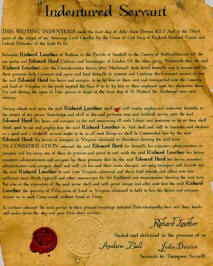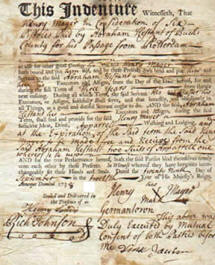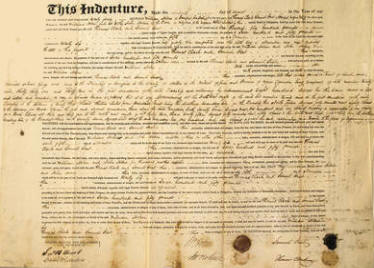Genealogy Terms

GENEALOGY
LINE
FAMILY
NAMES
LOFTIN:
Beatty
Corzine
Cranford
Fisher
Givens
Harwell
Kaiser
Lanier
Lomax
McCorkle
Rudisill
Sherrill
Upright
Washington
Work
SETZER:
Aderholdt
Barringer
Bovey
Bushart
Deal
Heavner
Herman
Ikert
Miller
Motz
Rankin
Witherspoon
GOBLE:
Babst/Bobst
Douglas
Faber
Fink
Fulbright
Hefner
Meinhert
Miller
Muller
Pabst/Bobst
Robinson
JOHNSON:
Corzine
Fink
Hamilton
Kaiser
Leslie
Lewis
Moore
Sherrill
Upright
Wilkinson
Additional
Family
SURNAMES
Genealogy Terms That You Need to Know
There are numerous terms in genealogy that you may not be familiar with and often we actually use them incorrectly.
Hopefully this page will help to give you a better understanding of what they mean.



Genealogy Terms Word Definition or Explanation 1st Cousins Your 1st Cousins are the children of your aunts and uncles. 2nd Cousins Your children and the children of your 1st Cousins are 2nd Cousins. 3rd Cousins Your grandchildren and the grandchildren of your 1st Cousins are 3rd Cousins. 1st Cousins
Once RemovedThe children of your 1st Cousins are your 1st Cousins Once Removed. 1st Cousins
Twice RemovedThe grandchildren of your 1st Cousins are your 1st Cousins Twice Removed. 4xG-Grandgather Your 4xG-Grandfather (or "four times Great Grandfather") is your Great-Great-Great-Great-Grandfather. Grand Aunt The sister of one of your grandparents is your Grand-Aunt. “Grand” shows that it is one generation away; “Great” is supposed to be added to generations beyond “Grand.” The same applies to Grand-Uncle. But like so many other words in the English language, there's the dictionary definition and then there's how it's commonly used.
Great-Aunt The sister of one of your great-grandparents is you Great-Aunt. Another "Great" is added to each successive generation. The sister of one of your great-great-grandparents is your Great-Great-Aunt (or 2xG-Aunt). Indenture An indenture is a legal contract that reflects or covers a debt or purchase obligation. Indentured Servant An indentured servant was a person under contract to work for another person for a definite period of time, usually without pay but in exchange for free passage to the new world. During the seventeenth century most of the white laborers in Maryland and Virginia came to America as indentured servants. Land Indenture A land indenture tells the terms of the indenture – the name of the person buying the land, the name of the person selling the land, how much land the person is acquiring, how much it is being purchased for, and a description of where the land is located. Marriage Bond A marriage bond is a legal engagement contract. A man who had proposed to a woman, went to the courthouse with a bondsman (often the father or brother of the prospective bride), and posted a bond indicating his intention to marry the woman. The bond was a specific amount of money that the prospective groom would have to pay as a penalty if an impediment to the marriage was found. No money literally changed hands at the time of posting the bond. But if the groom was discovered, for instance, already to have a wife whom he had abandoned, the marriage could not go through and the man would have to pay a specific amount of money.
1. The date on the bond is not the date of the actual marriage. Most marriages took place within a few days of posting the bond, but theoretically it could have been weeks or months before the actual marriage took place.
2. The existence of a marriage bond for two people does not conclusively mean that the marriage took place. A high percentage of marriages occurred after the bond was posted, but in a small percentage of cases the marriage was not carried out. Reasons not to go forward with the marriage could be the sudden death of one of the parties, or both parties mutually deciding to cancel their marriage plans. In these instances, the bond penalty would not have to be paid by the prospective groom.
3. Marriage bonds were most often posted in the county of the prospective bride’s residence or the county in which the wedding was to take place, if different from the bride’s residence.
4. Marriage bonds were not used in all the states or colonies. They were most common in the South.
5. Marriage bonds were supposed to be annotated with the date of the marriage by the minister or civil official after the marriage had taken place. This often was not done, however, due to poor recordkeeping in the county.
6. Marriage bonds seem to be most common in the United States in the 1700s and early 1800s. Sometimes they are the only indication that a couple legally married.
Family Examples Location Definition or Explanation Type of Document & Location Click Here William Sherrill - The "Conestoga Fur Trader"
(1666 - 1747)Land Indenture: Cecil County, Maryland Click Here Adam Sherrill - "The Pioneer
(1697 -1774)Land Indenture: Cecil County, Maryland SOURCES Genealogy: Think of a Marriage Bond as an "intention" to marry - Click Here


